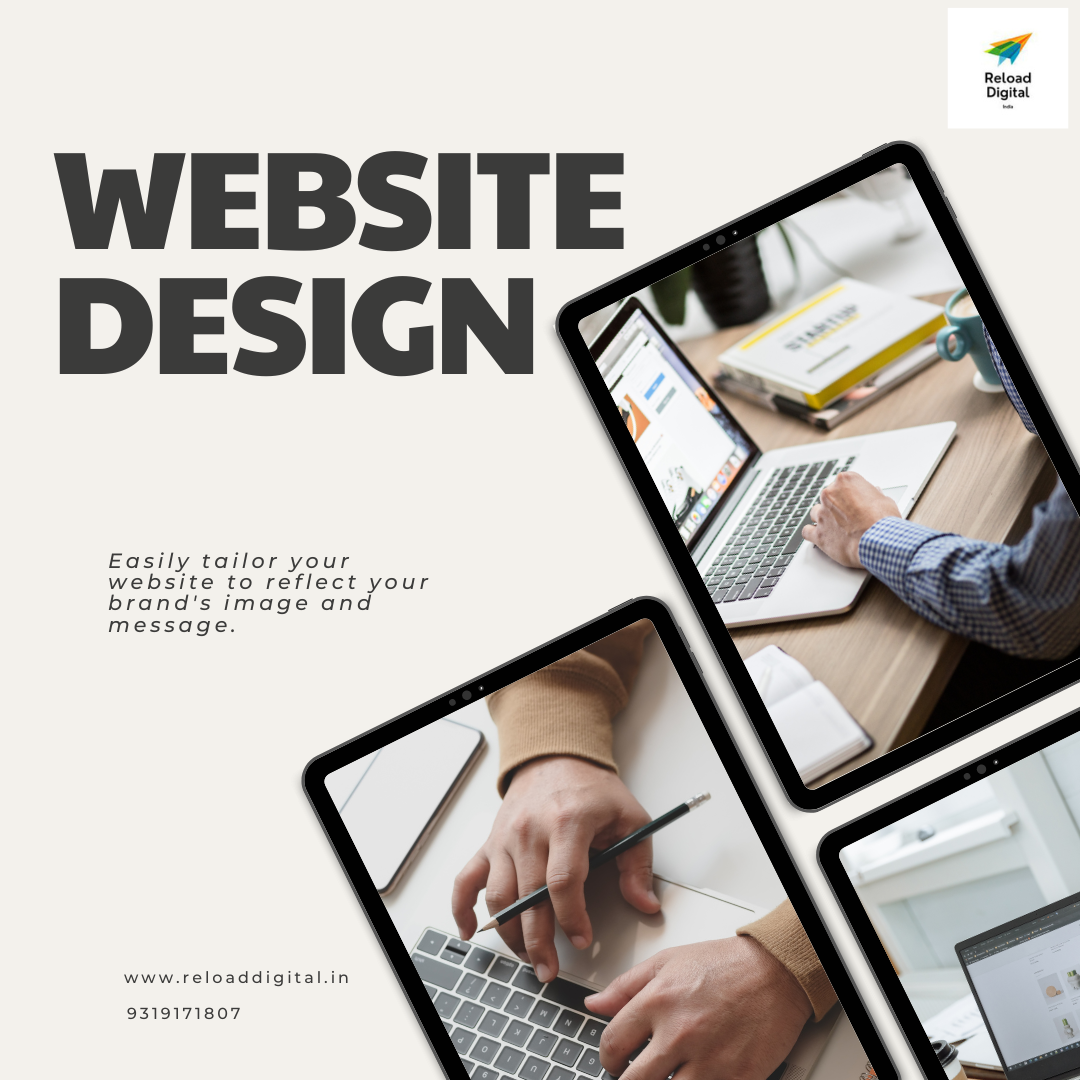The age of digitization has transformed websites into an essential touchpoint for businesses worldwide. Like a sophisticated storefront in a bustling digital marketplace, a website can either beckon customers or turn them away. While myriad factors can determine a website's success, its design stands out as the most crucial. Let’s delve into why website design truly is the key to unlocking your online potential.
1. The Lasting Effect of First Impressions
The Power of Immediate Judgments: It's an undeniable fact that humans are driven by visual stimuli. Google's research emphasizes this by revealing that users form design opinions in a mere 50 milliseconds. Such swift judgments underscore the importance of making an immediate impact. If your website fails to captivate instantly, potential customers might drift away even before understanding your offerings.
The Balance of Familiarity and Novelty: While leveraging familiar design patterns can create a sense of comfort, introducing elements of novelty can ensure that your website remains memorable. Striking this balance can harness the power of first impressions for optimal user retention.
2. Mobile Responsiveness: Adapting to the Evolving Digital Landscape
The Rise of Mobile Browsing: A significant portion of the global population now accesses websites via mobile devices. Ignoring this trend can alienate a considerable segment of potential customers. But it's not just about numbers; it's about experience. Frustration can quickly set in when a site fails to adjust to various screen dimensions.
Responsive vs. Adaptive Design: While responsive design ensures your website scales according to device size, adaptive design delivers specific layouts based on device type. Understanding the nuances of both can guide you to a more inclusive web strategy.
3. Effective Navigation: Charting the User’s Journey
The Significance of Intuitive Layouts: At its core, a website is an information hub. If users grapple with locating the information they need, their journey becomes marred by confusion. An intuitive layout with clear pathways can drastically enhance the user experience.
Emerging Navigation Trends: From sticky menus that remain accessible as users scroll, to progressive disclosure that reveals information progressively, modern navigation techniques can enhance usability while minimizing cognitive load.
4. Cohesive Branding: Crafting a Unified Digital Identity
Consistency as a Trust Builder: From colors and fonts to messaging tone, consistency across design elements reinforces brand recognition. A uniform digital identity not only assures users of your brand's professionalism but also fosters trust.
The Emotional Dimension: Beyond mere recognition, cohesive branding can evoke emotional reactions. The right color schemes and visual elements can resonate with your target audience, making your brand more relatable and authentic.
5. Aesthetics and Functionality: The Dual Pillars of Web Design
The Beauty Quotient: While an attractive design can draw users in, it's essential to understand the psychology behind aesthetics. Color theories, visual hierarchy, and balance can play pivotal roles in crafting a design that's not just beautiful but also psychologically engaging.
Prioritizing Functionality: A website overloaded with intricate designs might compromise load times and usability. It's essential to temper aesthetic aspirations with the fundamental goal of a website – to provide information seamlessly.
6. The Cruciality of Page Load Time
User Expectations in the Digital Age: In our high-speed digital age, even a slight delay in page loading can deter users. With alternative options just a click away, ensuring rapid load times can be the difference between retaining a potential customer and losing them to a competitor.
Strategies for Optimization: Techniques like lazy loading (where elements load only when they enter the viewport), efficient caching, and image compression can ensure your website remains agile and responsive.
7. Content Layout: Packaging Information Effectively
The Skim Factor: Given the plethora of information online, most users skim through content. Breaking text with relevant subheadings, visuals, and utilizing ample white space can make content more digestible and engaging.
Multimedia Integration: Incorporating videos, infographics, and interactive elements can elevate content engagement, catering to diverse user preferences and enhancing information retention.
8. Social Proof: Amplifying Credibility through Community Validation
The Trust Catalyst: Testimonials, user reviews, and notable collaborations can serve as trust markers. By integrating these elements into your design, you're not merely showcasing your achievements but providing potential customers with peer-validated reasons to choose you.
Engaging User-generated Content: Encouraging users to share their experiences, photos, or stories can create a community around your brand, amplifying credibility and fostering loyalty.
9. Accessibility: Designing for All
The Ethical and Business Case: Ensuring that your website caters to individuals with disabilities is both a moral obligation and a sound business strategy. By designing for accessibility, you're expanding your reach and emphasizing inclusivity.
Practical Steps for Inclusive Design: From contrast ratios and text sizes to keyboard navigation and screen reader compatibility, myriad design considerations can make your website universally accessible.
10. Analytics-Driven Refinements
The Ongoing Evolution: Design isn't a static endeavor. As user behavior evolves, so should your website. Tools like Google Analytics can provide insights into user preferences, navigation patterns, and pain points.
Feedback Loops: Encouraging user feedback and regularly conducting usability tests can provide invaluable insights, ensuring your design remains aligned with user needs and expectations.
Conclusion | Website Design
In a digital realm teeming with competitors, a well-designed website becomes a beacon, drawing users toward your brand. More than a mere digital presence, a website is a confluence of aesthetics, functionality, and branding. As you invest in refining these elements, you don't just enhance user experience; you unlock a portal to unparalleled online potential.
Content presentation further elevates this user experience. In an age of information overload, the presentation can make or break user engagement. Well-structured content layouts, punctuated by visuals and broken down into digestible chunks, cater to the modern user's scanning habit. Multimedia elements, from videos to interactive infographics, can further enrich this experience, providing diverse ways for users to consume information.
If you are looking for a website design and development company then you can choose the best website design and development company in Rewari, Haryana.
Amidst all these design considerations, the voice of the community stands strong. Social proof, manifesting as testimonials, reviews, or user-generated content, serves as a testament to a brand's credibility. When new users see real-life endorsements, their trust in the brand deepens. It's a gentle nudge, reminding them that they're joining a community of satisfied customers or readers.
Finally, the journey of website design is iterative. As user behaviors and preferences evolve, so should the design. Analytics tools offer a goldmine of insights, illuminating what users love and what they don't. By continually refining the design based on these insights, brands ensure that their websites remain relevant, engaging, and effective.






Comments